Mazda CX-5 Owners Manual: Hood
WARNING
Always check that the hood is closed and securely locked:
A hood that is not closed and securely locked is dangerous as it could fly open while the vehicle is moving and block the driver's vision which could result in a serious accident.
Opening the Hood
1. With the vehicle parked, pull the release handle to unlock the hood.
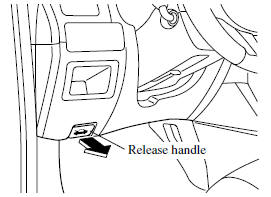
2. Insert your hand into the hood opening, slide the latch lever to the right, and lift up the hood.
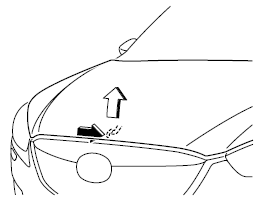
3. Grasp the support rod in the padded area and secure it in the support rod hole indicated by the arrow to hold the hood open.
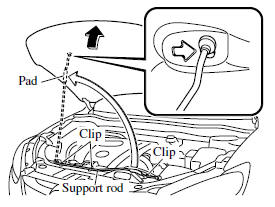
Closing the Hood
1. Check under the hood area to make certain all filler caps are in place and all loose items (e.g. tools, oil containers, etc.) have been removed.
2. Lift the hood, grasp the padded area on the support rod, and secure the support rod in the clip. Verify that the support rod is secured in the clip before closing the hood.
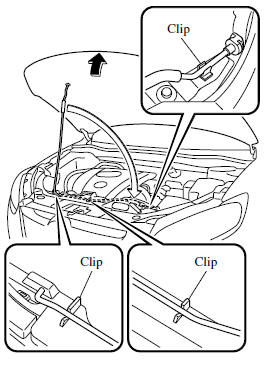
3. Lower the hood slowly until it rests in the unlocked position, and then remove your hands. Push the front center edge of the hood downward until a latching sound is heard, and the hood closes completely.
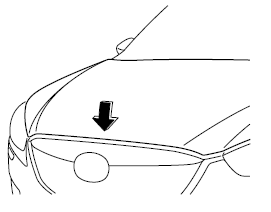
 Owner Maintenance Precautions
Owner Maintenance Precautions
The owner or a qualified service technician should make these vehicle inspections
at the indicated intervals to ensure safe and dependable operation.
Bring any problem to the attention of an Author ...
Other materials:
Conventional Brake System
Outline
A brake pedal with an intrusion minimizing mechanism has been adopted. As
a result, driver safety has been improved.
A small diameter long-stroke type master cylinder has been adopted, improving
operability and response.
A vacuum pump has been adopted, improving ...
Seat Belt
Fastening the Seat Belt
Position the lap belt as low as possible, not on the abdominal area, then adjust
the shoulder belt so that it fits snugly against your body.
Unfastening the Seat Belt
Depress the button on the seat belt buckle.
If the belt does not fully retract, pull it out and che ...
Transfer Removal/Installation [Fw6 Ax EL]
CAUTION:
Performing the following procedures without first removing the front ABS
wheel-speed sensor may possibly cause an open circuit in the harness if it is
pulled by mistake. Before performing the following procedures, disconnect the
front ABS wheel-speed sensor (axle side) and ...

